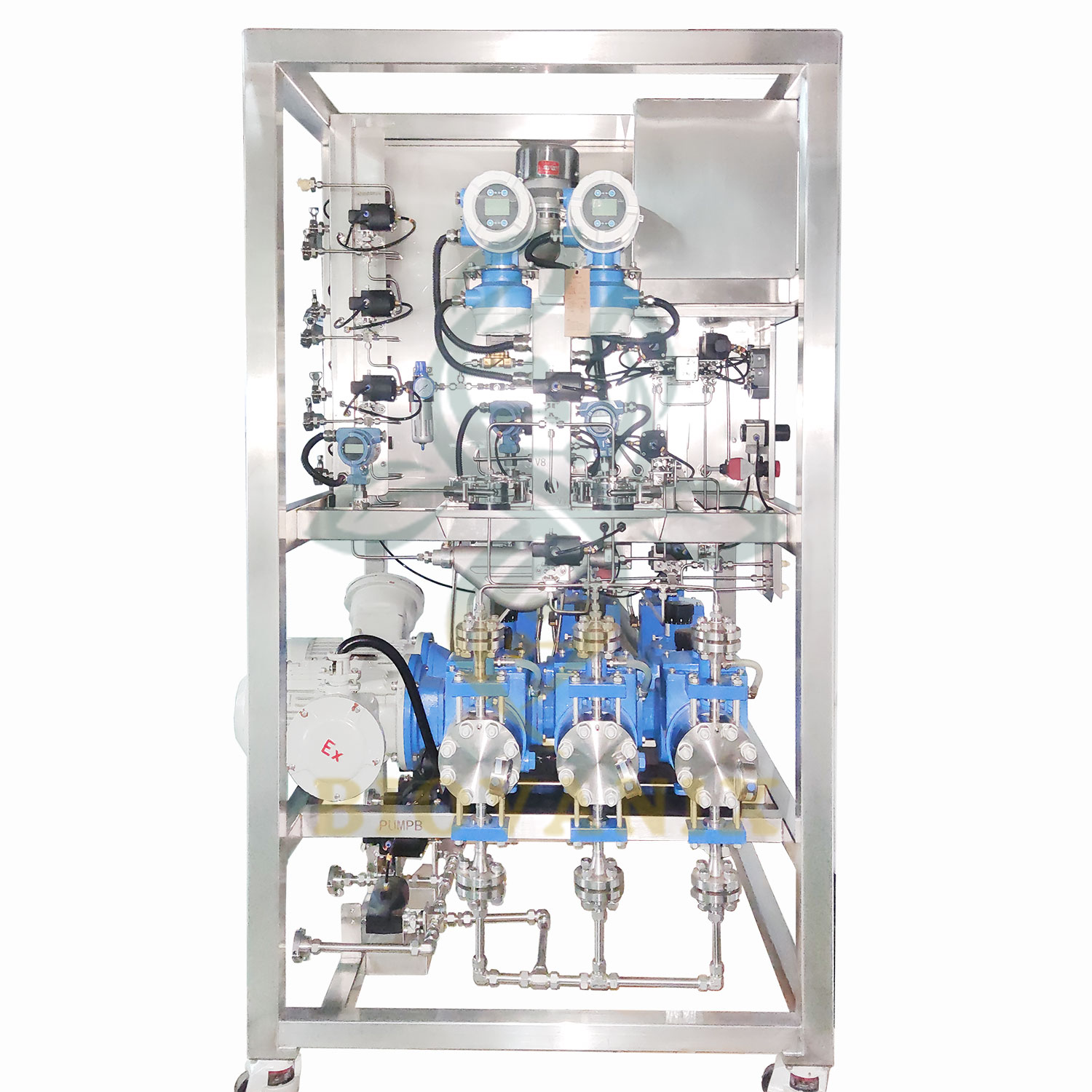Industrial Liquid Chromatography Automation & Modular Control System
The Industrial Liquid Chromatography (HPLC) Automation System, integrated with advanced modular control architecture, represents a transformative solution for modern pharmaceutical, biotech, and chemical manufacturing.
esigned to meet the rigorous demands of Industry 4.0, this system combines precision engineering, intelligent data analytics, and flexible modularity to deliver unparalleled efficiency, scalability, and compliance. Below is a detailed overview of its core features and technological innovations:

Design Module
1. Modular Architecture Design
The system employs a fully modular architecture, enabling seamless integration of functional components such as high-pressure pumps, autosamplers, column ovens, detectors (UV/VIS, PDA, MS), and data processing units. Each module operates independently via embedded controllers while communicating through standardized industrial protocols (OPC UA, ModBUS TCP/IP, EtherCAT). Key advantages include:
- Hot-Swappable Components: Replace or upgrade modules (e.g., switching from UV to mass spectrometry detectors) without system downtime.
- Scalable Configuration: Easily expand from analytical-scale to preparative-scale chromatography by adding pump modules or column arrays.
- Interoperability: Pre-validated interfaces ensure compatibility with third-party devices and legacy systems.
2. Precision Real-Time Control
The system achieves sub-microliter fluidic accuracy through cutting-edge control algorithms and hardware:
- Flow Rate Control: Ceramic piston pumps with model predictive control (MPC) maintain flow accuracy within ±0.05% RSD, even during complex gradient elution.
- Temperature Regulation: Multi-zone Peltier-based column ovens and detector cells stabilize temperatures to ±0.1°C, critical for sensitive biomolecule separations.
- Automated Injection: Robotic autosamplers with 6-axis articulation achieve injection volume precision of RSD <0.3%, supporting high-throughput workflows.
3. AI-Driven Data Analytics
Embedded artificial intelligence transforms raw chromatographic data into actionable insights:
- Real-Time Peak Detection: Convolutional neural networks (CNNs) analyze spectral data with <50 ms latency, automatically identifying overlapping peaks and baseline drift.
- Predictive Maintenance: Machine learning models monitor system health (e.g., pump seal wear, column degradation) and forecast maintenance needs, reducing unplanned downtime by >30%.
- Cloud Integration: Securely upload data to GMP-compliant cloud platforms (AWS GovCloud, Azure IoT) for cross-facility analytics and regulatory audits.
4. Regulatory Compliance & Security
Engineered to meet global pharmaceutical standards, the system includes:
- 21 CFR Part 11 Compliance: Full audit trails, electronic signatures, and role-based access control (RBAC) with LDAP/Active Directory integration.
- Data Integrity: Blockchain-based timestamping and AES-256 encryption ensure tamper-proof recordkeeping.
- Safety Protocols: Automated shutdown triggers for overpressure (>600 bar), temperature excursions, or solvent leaks, coupled with emergency venting systems.
5. Industrial IoT Integration
As a node in smart manufacturing ecosystems, the system enables:
- MES/SCADA Connectivity: Bidirectional communication with manufacturing execution systems for real-time batch adjustments.
- Digital Twin Synchronization: Mirror physical operations in a virtual environment to simulate method optimizations.
- Energy Efficiency: Dynamic power management reduces energy consumption by 20–40% during idle states.
6. Application-Specific Solutions
- Continuous Biomanufacturing: Integrate with perfusion bioreactors for real-time monitoring of monoclonal antibody titers.
- Green Chemistry: Solvent recovery modules recycle >90% of mobile phase, aligning with sustainability goals.
- Multicolumn Chromatography: Parallel column switching (ContiChrom®-like systems) for continuous protein purification.
Biovanix Industrial Liquid Chromatography Control System
Parameter | Specification |
Flow Rate Range | 0.001–100 mL/min |
Pressure Range | 0–600 bar (8700 psi) |
Temperature Control | 4°C–150°C (±0.1°C) |
Detection Wavelength | 190–900 nm (PDA), 200–2800 m/z (MS) |
Data Sampling Rate | 100 Hz (UV), 10 Hz (MS) |
Communication Protocols | OPC UA, MQTT, ModBUS TCP/IP, PROFINET |

